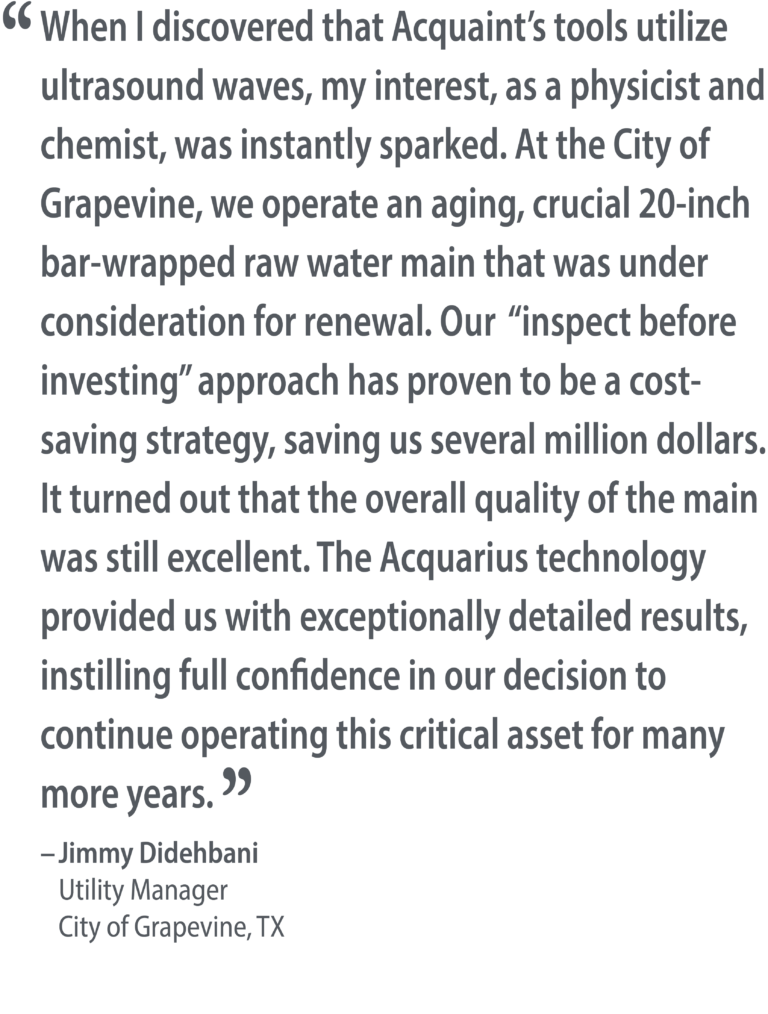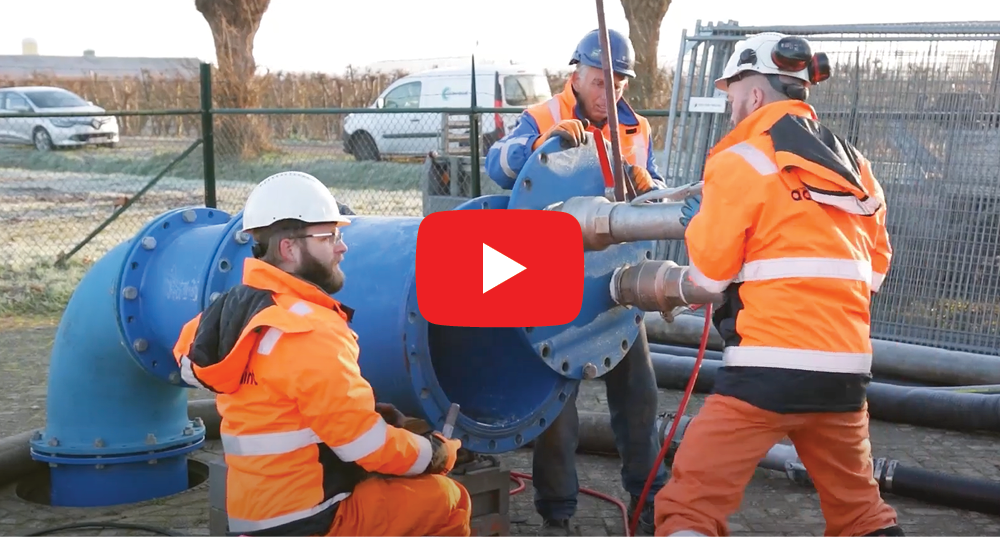ACQUARIUS
Acquaint's Acquarius In-line Inspection Technology
With on-board ultrasonic testing (UT) circumferential scanning sensors and internal mapping unit (IMU), the Acquarius is a diverse in-line inspection tool designed to use in different types of pipes and materials. Acquarius’ sensors record the condition of many miles of force main or water pressure pipelines in a single run with minimal shut down. Once the inspection is complete, the data from the onboard data logger is verified and uploaded to the cloud where Acquaint’s analytics team begins analysis for reporting. The tool is designed to provide high-quality, accurate data in a wide range of applications, service conditions and pipeline environments. Collected data provides insight into the condition, risks and lifetime of the inspected pipeline. This ultra flexible, configuration friendly, and reliable tool provides wall thickness measurements, ID changes, precise pipe geometry, joint defects, leak and air pocket detection, pipe ovality, delamination, AC leaching (degradation of asbestos cement), and plots XYZ locations. Acquarius’s comprehensive report helps set maintenance and management priorities based on data driven results. Asset managers can predict and repair pipeline damage before it occurs. This proactive approach provides data driven insights to set actionable decisions with known budgets for rehabilitation, eliminating disruptive pipe breaks, and associated environmental and economic impacts.
The Acquarius deliverable provides data driven insight into the current condition of the pipeline and serves as foundation for remaining useful life calculations, finite element analysis and risk curves. Capital improvement decisions can be reached based on the inspection data including pipeline rehabilitation or replacement and the areas to prioritize. The data gathered during the inspection is compiled in a straightforward report and deliverables include a geographic shape file (Shape/GIS/RD) with the results of the inspection.

What does Acquarius measure?
Depending on the pipe material, the Acquarius provides a complete condition inspection and assessment, measuring:
Degradation of healthy wall thickness:
- Corrosion in metals (remaining wall thickness)
- Leaching in AC (remaining structural density)
- H2S deterioration
Condition of a joint:
- Angular displacement (vertical and horizontal)
- Joint gap width
Also measures:
- Ovality
- Axial deformation
- Leaks
- Wire breaks in reinforced non-cylinder concrete pipelines
- Plots XYZ locations
- Contamination or debris at the bottom of the pipe
- Gas pockets
